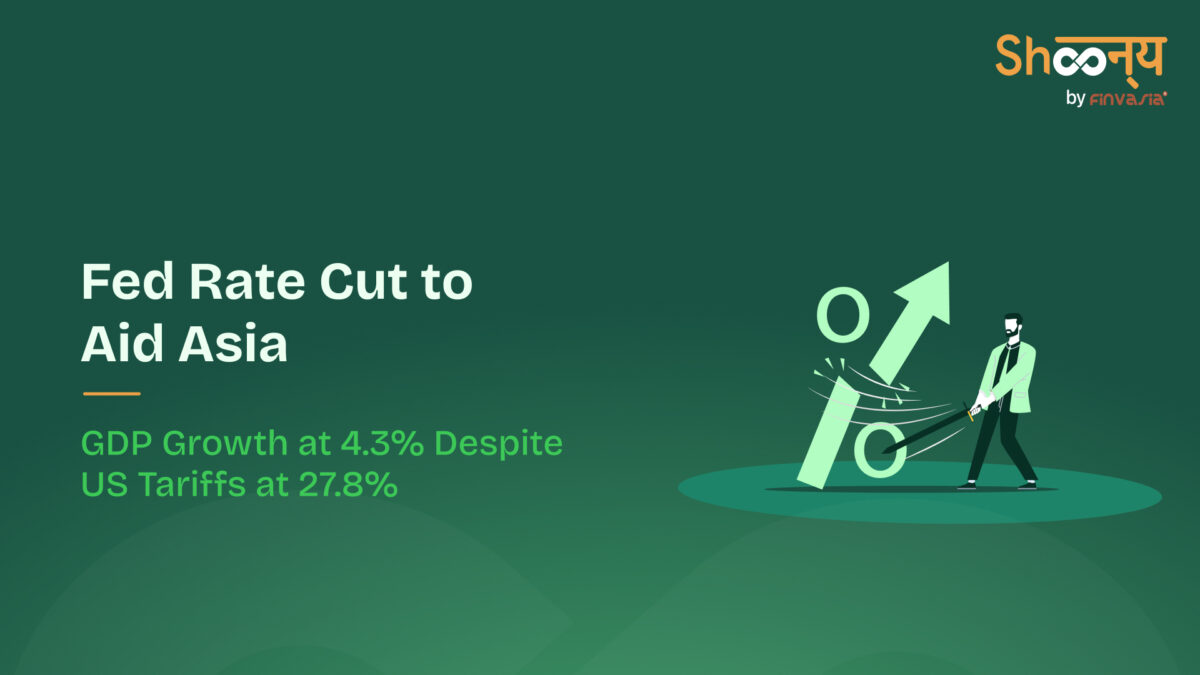Fed Rate Cut 2025: ADB Sees Relief as US Tariff Rate Hits 27.8%

A long-awaited Fed rate cut could bring much-needed relief to Asia as the region struggles with record-high US tariff rates. According to the Asian Development Bank (ADB), a Federal Reserve interest-rate cut in 2025 would ease financial conditions, support economic growth, and help stabilise export markets.
The Fed is expected to cut rates for the first time this year after US jobs growth slowed in August and unemployment climbed to its highest since 2021. For Asia, this policy shift comes at a critical time, with US tariffs averaging 27.8% and regional GDP growth forecast at just 4.3% in 2025.
ADB Chief Economist Albert Park noted that while most Asian economies remain resilient,a few debt-heavy countries, such as Laos and the Maldives, face rising repayment costs on US dollar loans. A softer interest-rate environment could ease that pressure, offering a much-needed cushion against tariff shocks.
Key Highlights of Federal Reserve Interest-Rate Cut Impact
- The Federal Reserve is expected to ease rates for the 1st time in 4 years after weak US jobs data.
- ADB says the cut will ease loan repayment burdens and support financial conditions.
- Import levies on Asia average 27.8%, compared to a historical mean of 18.6%, led by higher duties on China and India. In contrast, other Asian economies face tariffs of 15–20%.
- ADB projects East Asia’s growth at 4.3% in 2025, down slightly from 4.4% earlier.
- Laos and the Maldives are flagged as fragile due to high debt levels and dollar loan exposure.
- Higher tariffs reduce demand, but stability is preserved as most Asian countries face similar rates.
How Asia Could Benefit from a Fed Rate Cut?
A possible Fed rate cut in 2025 would not just ease loan repayments but could also reshape Asia’s financial outlook in the months ahead. Lower global borrowing costs would give governments and businesses more space to manage debt, especially in countries exposed to the US dollar.
For exporters, the timing is crucial. With US tariff rates averaging 27.8%, demand is already under strain. A softer Federal Reserve interest-rate cut could help balance these pressures by improving credit conditions and keeping trade activity steady.
According to the ADB, most Asian economies remain on stable ground, but Laos and the Maldives stand out as exceptions due to their heavy debt loads. For them, cheaper borrowing could be the difference between stability and stress.
Perhaps most importantly, a Fed move could calm export markets, giving manufacturers and traders confidence that demand will not deteriorate further. Instead of being a closing remark, this shift represents a potential turning point for Asia’s economic growth in 2025.
Conclusion
A long-awaited Fed rate cut could come as a timely cushion for Asia, where economies are already dealing with record-high US tariff rates and slower trade growth. While tariffs remain a major drag, the ADB believes Asia’s resilience will hold. Thus, a softer Federal Reserve interest-rate cut could provide the extra space needed to manage both trade shocks and financial stress.
Source: MoneyControl
Disclaimer: Investments in the securities market are subject to market risks; read all the related documents carefully before investing.








